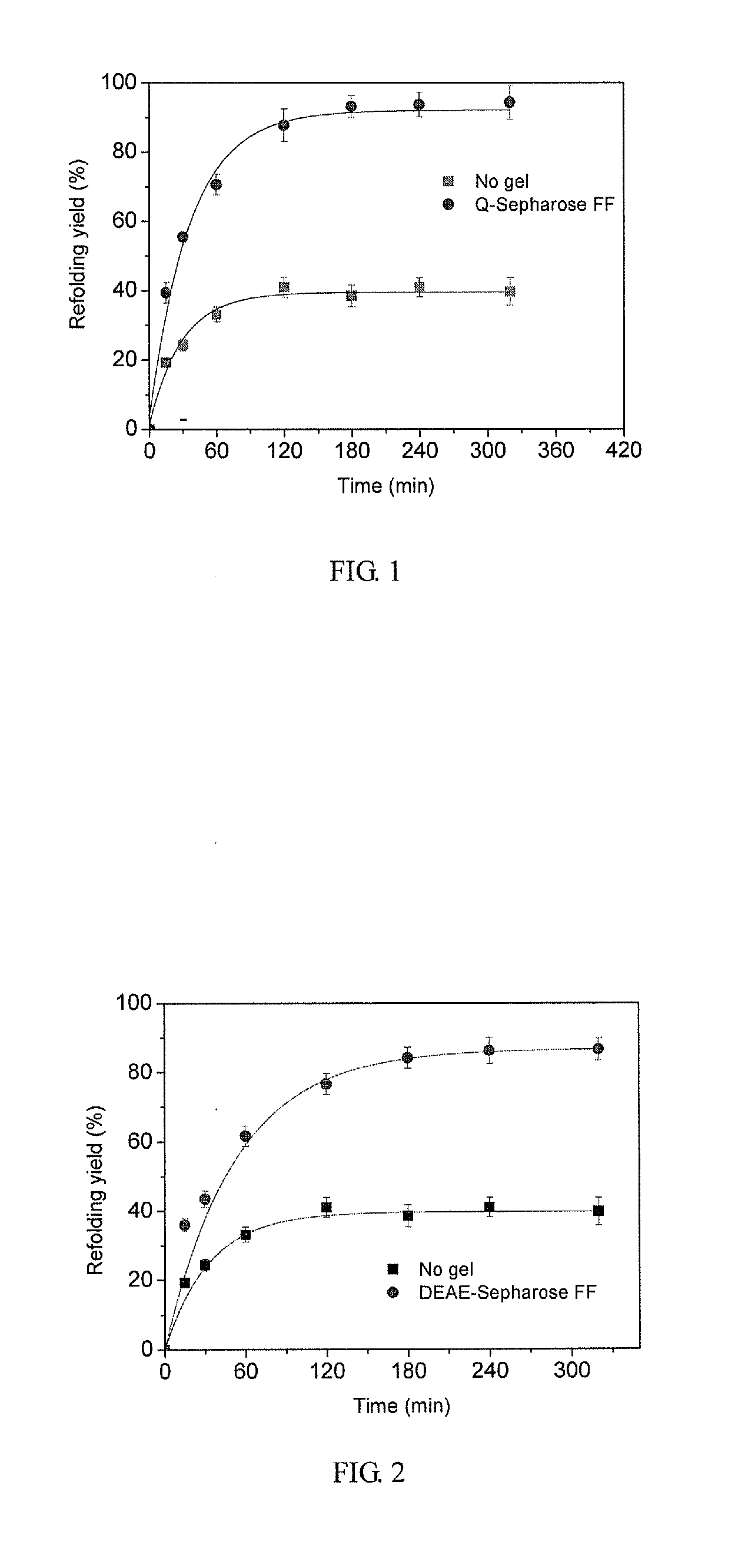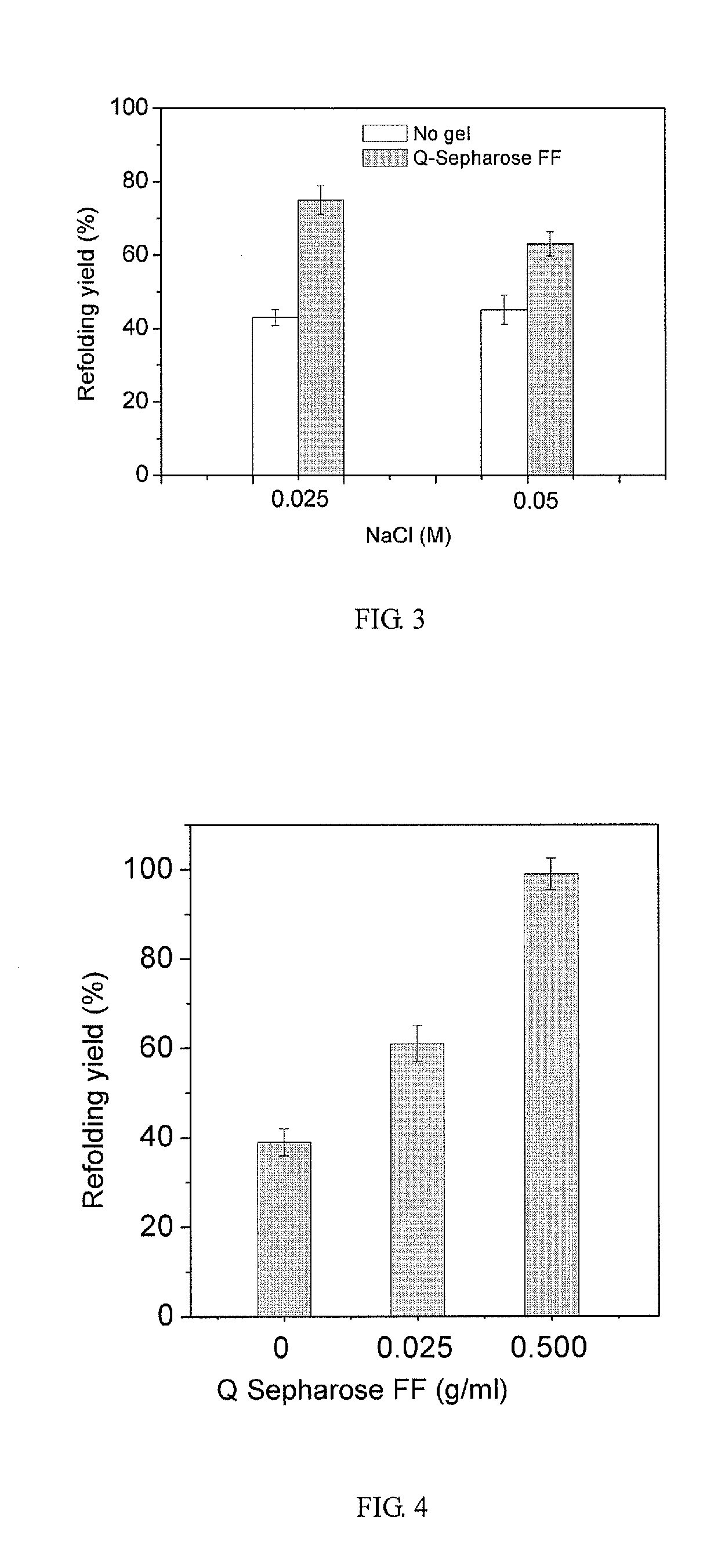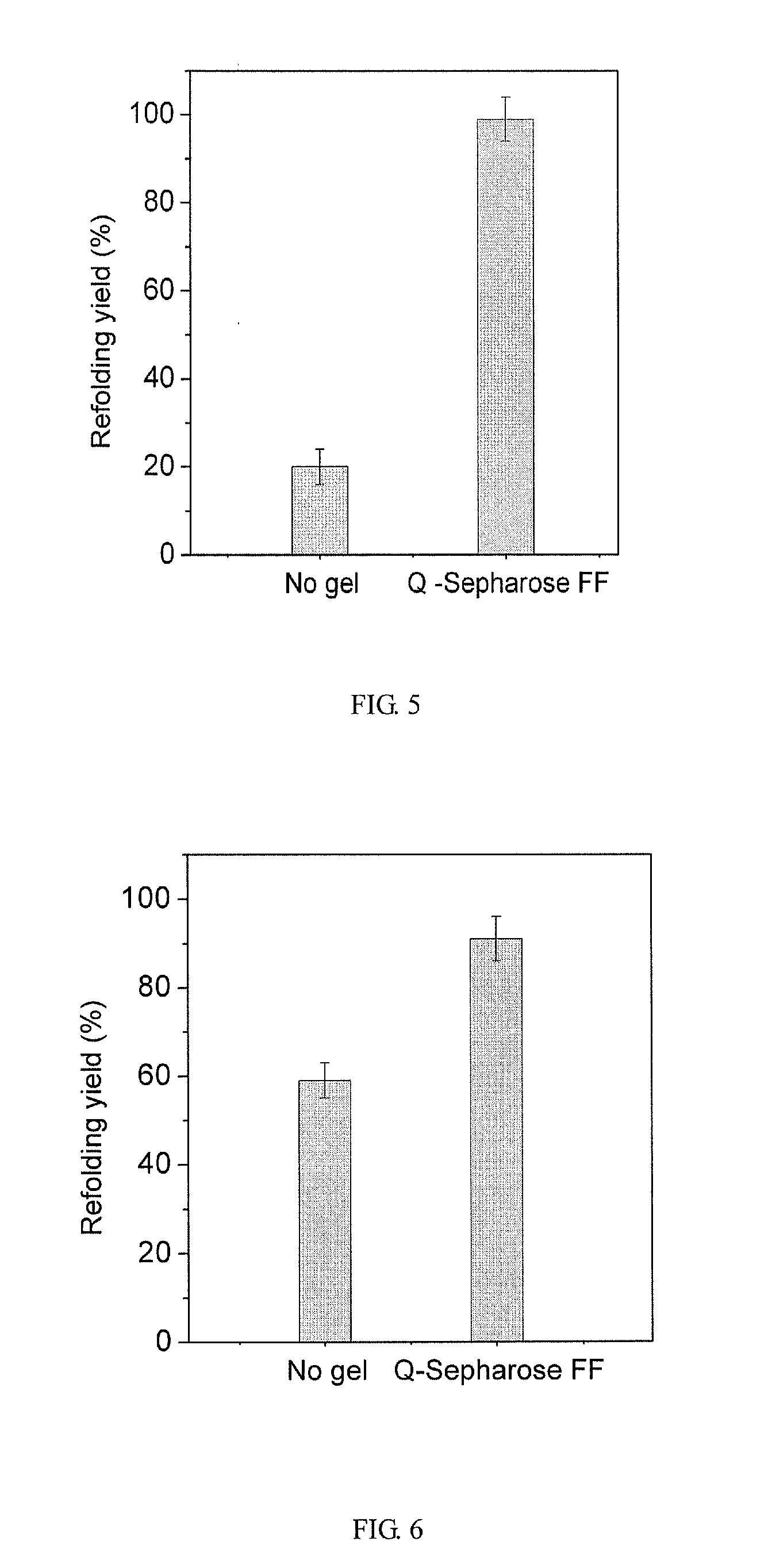Method of protein refolding with ion exchange resins and the application of the same
a technology of ion exchange resin and protein refolding, which is applied in the field of protein refolding method and the application of the same, can solve the problems of low refolding yield, difficult refolding technology, and great challenge in inhibition of aggregation, so as to facilitate folding, avoid weakening of electrostatic interaction, and inhibit aggregation
- Summary
- Abstract
- Description
- Claims
- Application Information
AI Technical Summary
Benefits of technology
Problems solved by technology
Method used
Image
Examples
example 1
[0039]Strong anion-exchange resin, Q-Sepharose Fast Flow, facilitates the refolding of the denatured and reduced lysozyme at 4 mg / ml.
[0040]Ion-Exchange Resin Preparation
[0041]As lysozyme carries positive charges at pH 8.5, a positively charged anion-exchange resin was chosen, such as Q-Sepharose Fast Flow. After 2 ml of the resin stored in ethanol solution with a concentration of 20% was placed in a sintered glass filter funnel, 20% of the ethanol solution was drained by suction, and then the resin was washed four times with 160 ml NaCl solution with a concentration of 0.5 mol / L. In each washing cycle, 40 ml of the said NaCl solution was added, and the mixture was stirred thoroughly with a glass stick; after that, the solution was drained by suction. The resin was further washed five times with 200 ml deionized water, and in each of these washing cycles, 40 ml of deionized water was added and the mixture was stirred thoroughly; then the solution was drained by suction; finally, the ...
example 2
[0052]Weak anion-exchange resin, DEAE-Sepharose Fast Flow, facilitates the refolding of denatured and reduced lysozyme at a protein concentration of 4 mg / ml.
[0053]Ion-Exchange Resin Preparation
[0054]As lysozyme carries positive charges at pH 8.5, a negatively charged anion-exchange resin was chosen, such as DEAE-Sepharose Fast Flow. After 2 ml such resin stored in ethanol solution with a concentration of 20% was placed in a sintered glass filter funnel, 20% of the ethanol solution was drained by suction, and then the resin was washed three times with 120 ml NaCl solution with a concentration of 2 mol / L. In each washing cycle, 40 ml of the said NaCl solution was added, and the mixture was stirred thoroughly with a glass stick; after that, the solution was drained by suction. The resin was further washed three times with 180 ml deionized water, and in each of these washing cycles, 60 ml deionized water was added and the mixture was stirred thoroughly; and then the solution was drained...
example 3
[0065]Strong anion-exchange resin, Q-Sepharose Fast Flow, facilitates the refolding of the denatured and reduced lysozyme at 4 mg / ml, in the presence of NaCl.
[0066]Ion-Exchange Resin Preparation
[0067]The anion-exchange resin was the Q-Sepharose Fast Flow mentioned in EXAMPLE 1 of this invention.
[0068]Preparation of Denatured and Reduced Protein
[0069]In preparation of denatured and reduced protein, 60 mg / ml lysozyme in denatured and reduced buffer containing 8 mol / L urea, 0.1 mol / L DTT, and 0.1 mol / L Tris-HCl (pH 8.5) was incubated at 40° C. for 3 hours. The refolding buffer was 0.1 mol / L Tris-HCl buffer at a pH of 8.5, containing 1.0 mol / L urea, 0.0054 mol / L cystamine, 0.025 or 0.05 mol / L NaCl and 0.001 mol / L EDTA-Na2. In the experiment, the temperature of the thermostatic shaking bed was 25° C.
[0070]Activity Assay
[0071]Lysozyme activity was assayed with Micrococcus lysodeikticus as a substrate. In the assay, 1.30 ml of substrate in phosphate buffer (pH 6.2) with a concentration of ...
PUM
| Property | Measurement | Unit |
|---|---|---|
| Temperature | aaaaa | aaaaa |
| Density | aaaaa | aaaaa |
| Density | aaaaa | aaaaa |
Abstract
Description
Claims
Application Information
 Login to View More
Login to View More - R&D
- Intellectual Property
- Life Sciences
- Materials
- Tech Scout
- Unparalleled Data Quality
- Higher Quality Content
- 60% Fewer Hallucinations
Browse by: Latest US Patents, China's latest patents, Technical Efficacy Thesaurus, Application Domain, Technology Topic, Popular Technical Reports.
© 2025 PatSnap. All rights reserved.Legal|Privacy policy|Modern Slavery Act Transparency Statement|Sitemap|About US| Contact US: help@patsnap.com



